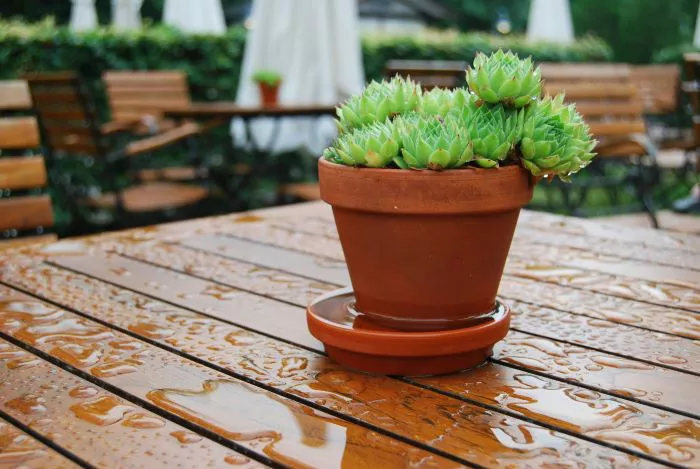Succulents are popular houseplants known for their unique shapes, vibrant colors, and low maintenance requirements. Planting rooted succulent cuttings is a rewarding process that allows you to propagate your favorite varieties and expand your collection. This article provides a comprehensive guide on how to successfully plant rooted succulent cuttings, ensuring they thrive in their new environment.
Understanding Succulent Cuttings
Succulent cuttings are sections of a plant that can grow roots and develop into new plants. These cuttings can be taken from various parts of the succulent, including leaves, stems, and offsets. Rooted cuttings have already developed roots, making them easier to plant and care for compared to unrooted cuttings.
Before planting, it is essential to understand the type of succulent you are working with. Different species may have specific care requirements, but most succulents thrive under similar conditions.
Preparing the Right Environment
Creating the right environment for your rooted succulent cuttings is crucial for their successful growth. Consider the following factors when preparing to plant:
Choosing the Right Pot: Select a pot with drainage holes to prevent water accumulation. Terracotta pots are an excellent choice as they allow for air circulation and moisture evaporation.
Selecting the Right Soil: Use a well-draining soil mix specifically designed for succulents and cacti. You can purchase pre-mixed soil or create your own by combining regular potting soil with perlite or coarse sand to improve drainage.
Location and Light: Succulents require bright, indirect light to thrive. Choose a location that receives ample sunlight but protects the plants from harsh afternoon rays. A south-facing window is often ideal.
Planting Rooted Cuttings
Once you have prepared the environment, it is time to plant the rooted succulent cuttings. Follow these steps for successful planting:
Gather Your Materials: You will need your rooted succulent cuttings, a suitable pot with drainage holes, well-draining soil, and a small trowel or your hands for planting.
Fill the Pot with Soil: Add the well-draining soil to the pot, filling it to about two-thirds full. Leave enough space for the succulent cutting to be planted without crowding.
Plant the Cutting: Gently remove the rooted succulent cutting from its original container. Be careful not to damage the roots. Place the cutting in the center of the pot and fill in around the roots with more soil. Ensure that the base of the cutting is level with the soil surface.
Firm the Soil: Lightly press the soil around the cutting to eliminate air pockets. Be cautious not to compact the soil too much, as succulents prefer loose, aerated soil.
Watering: After planting, water the cutting lightly. Ensure that the soil is moist but not soggy. Overwatering can lead to root rot, which is a common issue with succulents.
Caring for Your Newly Planted Succulents
After planting, providing the right care is essential for the health and growth of your rooted succulent cuttings. Here are some key care tips:
Light Requirements: Place the newly planted succulents in a location with bright, indirect light. If the plants begin to stretch or lean towards the light, they may need more exposure.
Watering Schedule: Allow the soil to dry out completely between waterings. Depending on the humidity and temperature, this may mean watering every one to two weeks. Always check the soil moisture before watering.
Fertilization: Succulents do not require much fertilizer. During the growing season (spring and summer), you can apply a diluted, balanced fertilizer every four to six weeks. Avoid fertilizing during the dormant months (fall and winter).
Temperature and Humidity: Most succulents prefer temperatures between 60°F and 80°F (15°C to 27°C). They thrive in low humidity environments. Avoid placing them in areas with high humidity, such as bathrooms.
Pest Management: Keep an eye out for common pests such as mealybugs and aphids. If you notice any pests, treat them promptly with insecticidal soap or neem oil.
Repotting and Growth
As your rooted succulent cuttings grow, they may outgrow their pots. Repotting is essential to provide adequate space for root development. Here are some signs that your succulents may need repotting:
Root Bound: If you notice roots growing out of the drainage holes or circling the top of the soil, it is time to repot.
Stunted Growth: If your succulent appears to be growing slowly or not at all, it may need more space for root expansion.
Soil Degradation: Over time, soil can become compacted or depleted of nutrients. If the soil looks worn out, consider repotting into fresh soil.
To repot, follow these steps:
Choose a slightly larger pot with drainage holes.
Carefully remove the succulent from its current pot, taking care not to damage the roots.
Place the succulent in the new pot and fill in with fresh, well-draining soil.
Water lightly and allow the plant to acclimate to its new environment.
Conclusion
Planting rooted succulent cuttings is a straightforward process that can lead to a thriving collection of beautiful plants. By understanding the needs of your succulents and providing the right environment, you can ensure their successful growth. Remember to monitor their light, water, and temperature requirements, and be vigilant for pests. With proper care, your rooted succulent cuttings will flourish, providing you with joy and beauty for years to come. Enjoy the process of propagation and the satisfaction of watching your succulents thrive.


